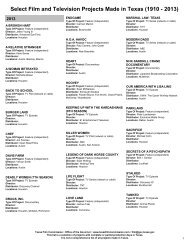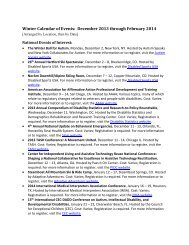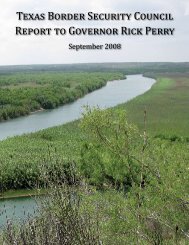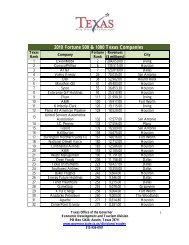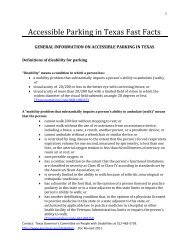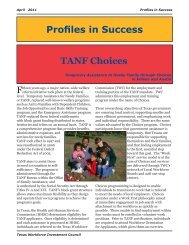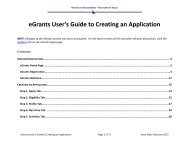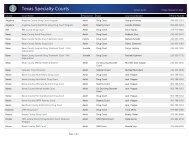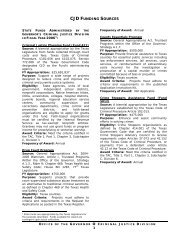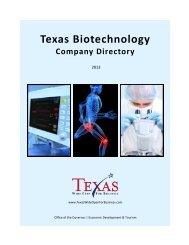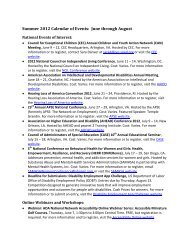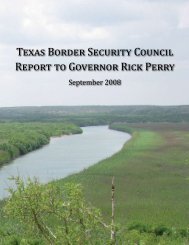People with Disabilities: A Texas Profile
People with Disabilities: A Texas Profile
People with Disabilities: A Texas Profile
Create successful ePaper yourself
Turn your PDF publications into a flip-book with our unique Google optimized e-Paper software.
Civilian Noninstitutionalized Population<br />
The noninstitutionalized civilian population includes all individuals, 16 years of age and older, who are<br />
not on active duty in the military and who are not inmates of institutions.<br />
Civilian Labor Force<br />
To remain consistent <strong>with</strong> accepted terminology and measures related to the labor force (such as the<br />
unemployment rate), several analyses in this report depend upon or reference the civilian labor force.<br />
The civilian labor force is comprised of all noninstitutionalized individuals, 16 years of age and older,<br />
who are either employed or unemployed and are not members of the armed forces. In this report, the<br />
individuals who comprise the civilian labor force are also referred to as labor force participants.<br />
Examples of individuals who are not in the labor force include students in school, homemakers, retirees,<br />
people who cannot work because of health problems, and discouraged job seekers (individuals who<br />
want jobs and looked for work in the past year, but abandoned their search believing that no suitable<br />
jobs are available).<br />
Unemployment<br />
Individuals are considered unemployed if they do not have a job, have actively looked for work in the<br />
previous four weeks, and are currently available for work.<br />
Data Sources<br />
The main data sources used for this research are the 2011 ACS and labor force data from BLS. The 2011<br />
ACS is an ongoing, yearly survey that samples a small percentage of the population including<br />
noninstitutionalized individuals living in group quarters such as college dormitories, residential<br />
treatment centers, and nursing facilities. The sample responses are weighted to approximate the<br />
demographic characteristics of the entire population. ACS data are available as summary tables and<br />
Public Use Microdata Sample (PUMS) files. The microdata files use a smaller sample than the summary<br />
tables, but can be used for custom analyses. In this report, summary table data are used for analyses at<br />
the national level and microdata are used for analyses at the state level. Minor differences exist<br />
between the information derived from the summary tables and microdata because of sampling<br />
differences. These differences are noted when relevant.<br />
BLS derives annual and monthly labor force statistics from the Current Population Survey (CPS). The CPS<br />
is an ongoing monthly survey administered to a sample of households. CPS data are used for various<br />
economic statistics such as the national unemployment rate and measures related to employment and<br />
income.<br />
Disability estimates by county were developed by the <strong>Texas</strong> Department of Assistive and Rehabilitative<br />
Services (DARS). The estimates were calculated by multiplying the population of each county by the<br />
county‐specific rates of disability. The baseline population for each county was calculated by the <strong>Texas</strong><br />
State Data Center and the county‐specific rates for each type of disability were extracted from ACS data.<br />
For the counties not represented on the survey, allocation factors developed by the Missouri Census<br />
4 <strong>Texas</strong> Workforce Investment Council



